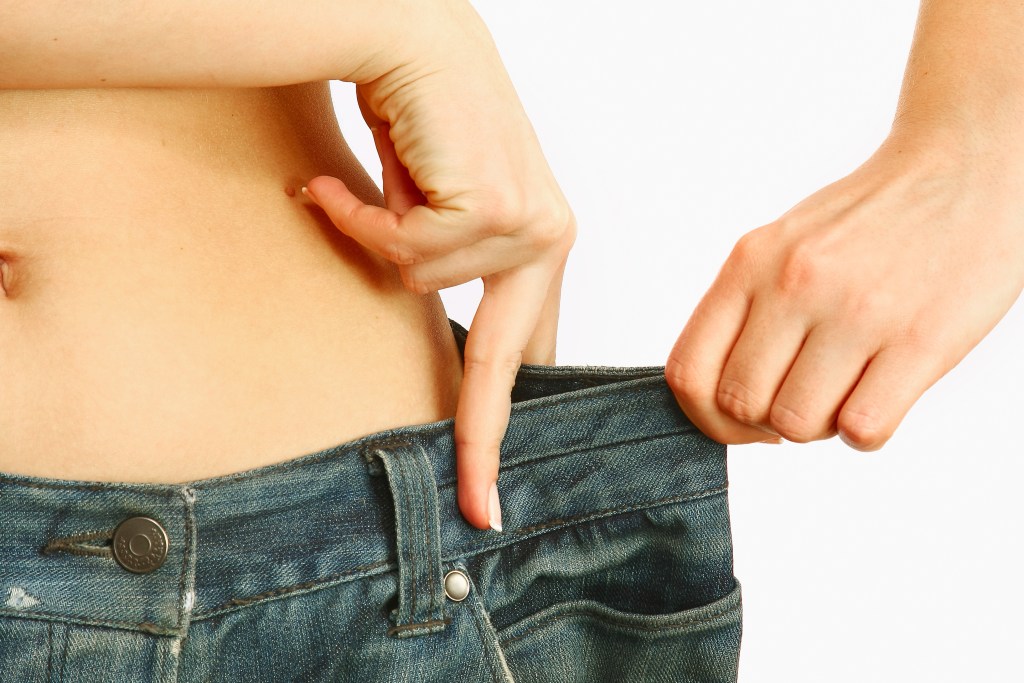At a glance
A keto weight loss timeline shows how your body gradually adapts to burning fat for fuel as carbohydrate intake decreases. Early stages often bring quick water loss, followed by steady fat reduction and improved energy. Over time, maintaining a nutrient-dense, low-carb diet supports metabolic health and promotes sustainable, long-term weight management.
A nutritious, low-carb diet is one of the most effective dietary strategies for achieving significant and lasting weight loss.
Here’s a complete keto weight loss timeline, including signs of ketosis and typical weight loss patterns, so you know what to expect when embarking on a high-fat diet.
How to lose weight on keto
A well-planned keto diet can help achieve significant weight loss and enhance metabolic health, which promotes sustainable long-term weight management.
Keto is a dietary approach that limits daily carb intake to between 20 and 50 grams of net carbs while obtaining the majority of calories from healthy fats such as olive oil, coconut oil, avocados, and oily fish.
Restricting carbohydrate consumption reduces the body’s availability of glucose, prompting a metabolic shift to fat-burning, a state known as ketosis.
During ketosis, the liver starts to break down dietary and stored body fat to generate energy, which releases ketones. This group of organic acids serve as a highly effective alternative fuel source when glucose is limited.
This explains why the keto diet is highly effective in reducing body fat, as confirmed by research published in Canadian Family Physician.1
This study demonstrated that a high-fat ketogenic diet led to more sustained weight loss and a significantly lower body fat percentage than a low-fat diet, underscoring its effectiveness in managing body weight.
However, to achieve healthy weight loss, it’s crucial to focus on a balanced approach that includes regular physical activity, optimal nutrition, and consistent sleep patterns.
That’s why it’s important to follow Healthy Keto®. This advanced version of the ketogenic diet emphasizes nutrient-rich, high-quality foods, including non-GMO organic vegetables, grass-fed beef, full-fat organic dairy, pasture-raised eggs, and wild-caught fish.
This dietary pattern not only promotes ketosis but also helps ensure you receive essential nutrients, which promotes sustainable and healthy weight loss.
In addition, combining keto with intermittent fasting can further enhance weight loss.
A 16:8 or 18:6 intermittent fasting pattern, characterized by fasting for 16 or 18 hours and eating within an 8 or 6-hour window, extends the time your body relies on stored fat as its primary fuel source.
This approach enhances fat burning and promotes effective weight management by supporting ketosis and improving metabolic efficiency.
Watch the video below to learn what to expect when starting a keto weight loss journey.
Keto weight loss timeline
Your precise weight loss timeline can vary based on factors such as your starting weight, previous diet or lifestyle habits, metabolic flexibility, and how well you adhere to a low-carb diet.
However, here’s a general outline of what to expect when starting a keto diet.
Week 1
During the first week of following a low-carb diet, most people experience rapid body weight reduction of up to 10 pounds, primarily due to significant water weight loss.
Limiting carbs triggers the depletion of glycogen, a storage form of blood sugar that’s bound to water. As glycogen levels decrease, water is released and excreted, leading to the rapid weight loss typically seen during the early phases of keto.
This water loss may cause dehydration and temporary electrolyte imbalances, which can contribute to keto-flu symptoms such as Intermittent fasting fatigue, headaches, muscle cramps, and dizziness.
“Staying hydrated and replenishing lost electrolytes is crucial to mitigating these typically mild and transient side effects and helping your body adjust to the ketogenic diet,” explains Dr. Berg.

Weeks 2 to 3
During the first few weeks of keto, your body transitions more fully from burning glucose to utilizing fat as its primary fuel.
As your body burns fat and your cells become efficient at using ketones as an energy source, you’ll start to experience consistent fat loss, with weight reduction becoming more steady and gradual.
Evidence published in Experimental and Clinical Cardiology shows an average weight loss of around two pounds per week during this phase.2
As energy levels stabilize and appetite decreases, adhering to keto becomes more manageable, supporting ongoing weight loss.
Weeks 4 to 5
During weeks 4 to 5, significant fat burning continues, particularly if keto is combined with intermittent fasting.
This phase often brings noticeable changes in body composition, especially around the waist, as fat loss becomes more pronounced, and many people observe improved muscle definition and a reduction in overall body fat.
After the one-month mark, the health benefits of a ketogenic diet extend beyond just weight loss.
Individuals often see marked improvements in metabolic health, including more stable blood sugar levels and reduced insulin resistance, as well as improved mental clarity and more energy.

Months 2 to 3
After a couple of months, steady fat loss at a rate of around one pound per week continues as your metabolism will have fully adapted to burning fat.
However, weight loss plateaus are common during this stage, often linked to consuming too many calories as the body requires less energy after significant weight loss.
It’s essential to review your fat and carbohydrate intake to overcome stalled body weight reduction and continue weight loss on keto.
Managing stress levels and getting good quality sleep are equally important for achieving weight loss goals. Both factors support metabolic processes and hormonal balance, which are crucial for maintaining ketosis and fat-burning.
Beyond 3 months
After three months of consistently following a low-carb diet, steady fat loss continues, and metabolic health improves significantly.
At this point, many people also experience improved sleep quality, decreased inflammation, and better cardiovascular health.
In addition, long-term adherence to a low-carb diet is typically accompanied by improved cognitive functions, enhanced immune and skin health, and overall greater vitality.

How much weight can you lose on keto?
According to research published in Nutrients, individuals who followed a ketogenic diet for 12 weeks experienced weight loss ranging from 24 to 40 pounds, and in some cases, overall body fat mass was reduced by as much as 40 percent.3
The authors of this study concluded, “Evidence suggests that a ketogenic diet can help with weight loss, visceral adiposity, and appetite control.”
Many people report losing 60 pounds or more over the course of a year on keto, which indicates an average weight loss of around five pounds per month.
However, while some individuals may experience greater weight loss, others may see more modest results, depending on how well they adhere to a low-carb diet, their metabolic health, and their general activity levels.

Reasons you’re not losing weight on keto
There are several potential reasons why you aren’t losing weight on keto, and understanding these factors can help you make beneficial changes to reach your health and wellness goals.
Let’s look at five common weight loss mistakes on keto and their solutions.
If you’re not seeing results, it may help to revisit a keto diet for beginners guide to reset your approach, correct nutritional imbalances, and improve adherence.
1. High-fat intake
While fat is a key component of the ketogenic diet, consuming too much can prevent weight loss, especially if calorie intake exceeds your body’s energy requirements.
To address this, focus on healthy fats such as avocados, grass-fed beef, oily fish, and olive oil. However, be mindful of portion sizes, avoid extra fat sources such as fat bombs, and understand your macronutrient needs using a keto calculator.
2. Hidden carbs
Hidden carbs found in many processed foods, sauces, dressings, or even some vegetables can quickly exceed your daily net carb limit and knock you out of ketosis, which will slow down or prevent fat loss.
Reviewing a reliable keto food list can help you avoid these hidden sources and make smarter food choices.
It’s crucial to carefully track your carbohydrate intake and read labels to ensure you’re staying within your carb limits to maintain ketosis and achieve sustained weight loss.

3. Snacking
Snacking and grazing, even on keto-friendly foods, can lead to excess calorie intake and trigger frequent insulin spikes, which can slow down fat-burning and, consequently, weight loss.
To curb snacking, consume adequate amounts of healthy fats with your meals. This helps keep you fuller for longer, stabilizes your blood sugar and insulin levels, and reduces cravings between meals.
4. Poor metabolic health
Poor metabolic health, such as insulin resistance or hormonal imbalances, can slow weight loss on keto by impairing the body’s ability to burn fat effectively.
Following Healthy Keto and practicing intermittent or prolonged fasting methods, such as the occasional 24-hour fast, is an excellent strategy to promote metabolic balance and long-term weight loss support.
5. Lack of physical activity
Lack of physical activity can hinder weight loss on keto by reducing calorie expenditure and slowing fat metabolism.
Incorporating regular exercises, including strength training and cardio workouts, enhances metabolic health and accelerates fat burning, thereby supporting weight loss.

Signs keto is working
In addition to weight loss, there are various other signs that your body is in fat-burning mode.
Here are key indicators that keto is working:
- Improved energy levels
- Mental clarity and enhanced focus
- Reduced food cravings
- Diminished hunger sensations
- Improvements in moods
- Enhanced sleep quality
- Better digestive health
You can also confirm that your body has transitioned into ketosis using ketone tests. These tests, available as urine strips, breath analyzers, or blood meters, measure the presence of ketones in your body.
Elevated ketone levels indicate that your body is effectively burning fat for energy, and regularly checking your ketone concentrations can help track progress and ensure you remain in ketosis.
Key takeaways
- The keto weight loss timeline begins with quick water loss, followed by steady fat reduction as the body adapts to burning fat for energy.
- Weight loss on keto can vary; however, many individuals lose between 25 and 40 pounds within the first three months of consistent low-carb eating.
- After a year on keto, total weight loss can reach up to 60 pounds.
FAQ
1. Is keto good for weight loss?
Yes, the ketogenic diet has been found to be more effective and sustainable for weight loss than low-fat or low-calorie diets.
2. What is the normal keto weight loss timeline?
An expected timeline for weight loss on keto starts with rapid initial body weight reductions of up to 10 pounds due to water loss, followed by a steadier rate of 1 to 2 pounds per week as your body adapts to burning fat for energy.
Most people see an average weight loss of around five pounds per month once they have become fully fat-adapted.
3. How long does it take to see results on keto?
Most people experience significant weight loss within the first two weeks of keto. However, this is primarily due to water weight loss as the body adjusts to burning fat to generate energy.
Lasting fat loss typically begins after this initial phase, with steady body weight reduction occurring over the following months as your body fully shifts into fat-burning mode.
4. Why am I not losing weight on keto?
Factors such as excessive fat intake, consuming foods containing hidden carbs, and snacking are among the most common causes of not losing weight on keto.
In addition, poor metabolic health, lack of adequate sleep, and chronic stress can lead to metabolic and hormonal imbalances that interfere with the body’s ability to burn fat, which can hinder weight loss.
5. How much weight can you lose in a month on keto?
Many keto dieters report an average monthly weight loss of around five pounds. While some individuals may experience slower weight loss, those who combine keto with intermittent fasting can lose up to seven pounds within a month.
6. How long does it take to lose 20 pounds on keto?
You can lose 20 pounds within four to five months of following a nutritious low-carb diet such as Healthy Keto®.
7. How can I speed up keto weight loss?
To speed up weight loss on keto, consider combining Healthy Keto with intermittent fasting. This can significantly enhance fat burning as your body has to rely on stored body fat as a primary energy source during fasting periods.
Sources
- https://pmc.ncbi.nlm.nih.gov/articles/PMC6371871/ ?
- https://pmc.ncbi.nlm.nih.gov/articles/PMC2716748/#:~:text=The%20mean%20initial%20weight%20of,%2C%20respectively%20(Figure%202). ?
- https://pmc.ncbi.nlm.nih.gov/articles/PMC8153354/ ?


















